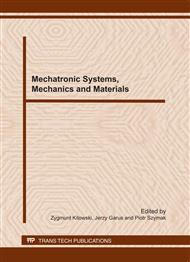p.168
p.177
p.185
p.194
p.200
p.207
p.214
p.222
p.232
Modelling of the Toothed Gear Operations with the Application of the Analysis of the Gear Sliding Mesh Velocity Changes
Abstract:
Searching for effective diagnostic methods of basic elements of driving systems is still the actual problem. The most often the vibroacoustic diagnostics based on the analysis of vibrations and noises generated by the working system is applied. Driving systems of vehicles are rather complicated. They consist, among others, of various types of toothed gears. Within the vibroacoustic signals recorded during their operation not only harmonic components – being the effect of these gears operations - are present, but also components generated by other elements. Due to this, there is a necessity of the development of models of the vibroacoustic signals generation by the main elements of the driving system. Such models will allow to identify – within the recorded signals – the harmonic components related to processes occurring during the gear operation. These models should be relatively simple due to the possibility of their application in diagnostic devices operating in the ‘on line’ mode. Modelling of the single-stage toothed gear, with the application of the analysis of the gear sliding mesh velocity changes, is presented in the hereby paper.
Info:
Periodical:
Pages:
200-206
Citation:
Online since:
November 2011
Authors:
Keywords:
Price:
Сopyright:
© 2012 Trans Tech Publications Ltd. All Rights Reserved
Share:
Citation:


